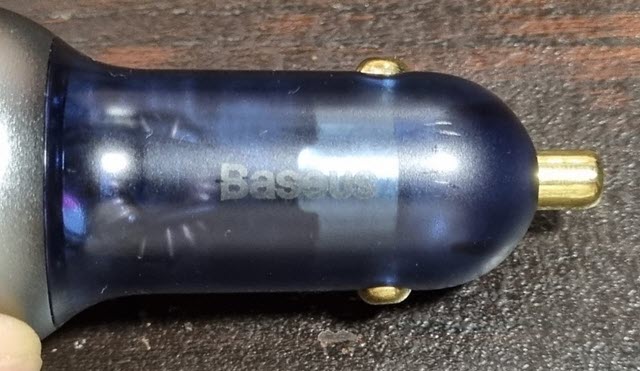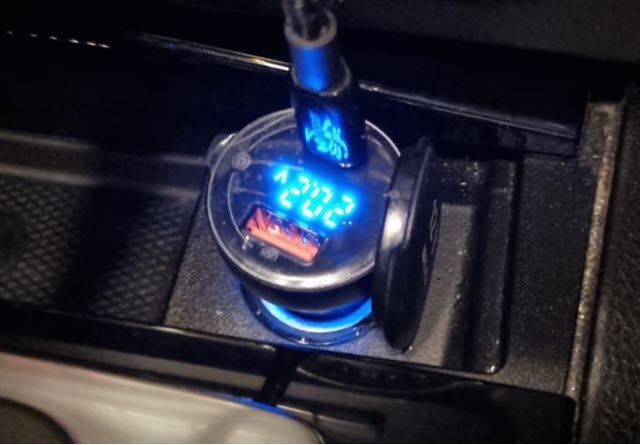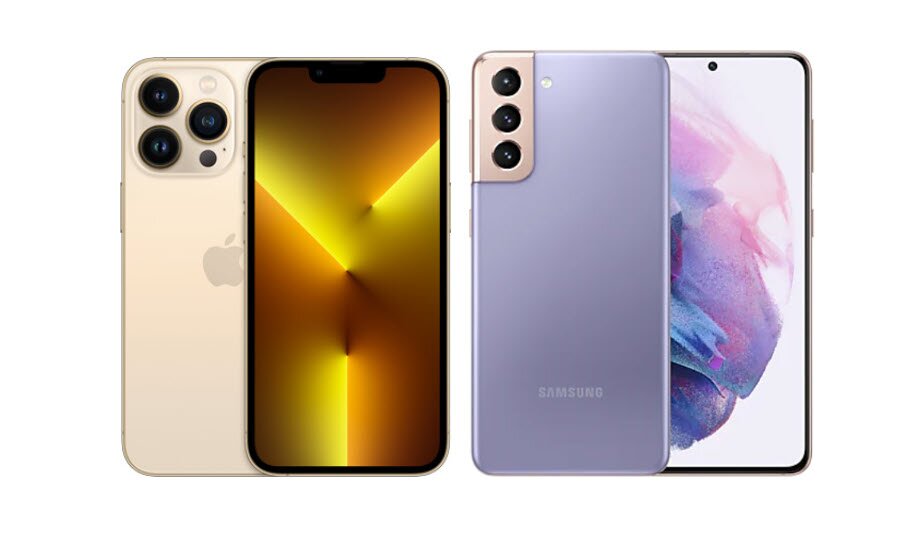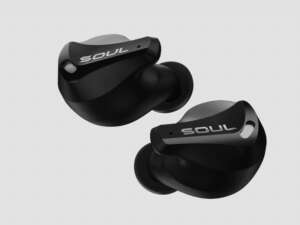The Baseus 65W dual quick car charger stands out as a cost-effective solution for charging smartphones, tablets and laptop.
Physical Size and Weight Design
The Baseus 65W car charger is 33.66mm x 68mm in size and weighs around 28 grams. The faceplate with a USB Type-C and a USB Type-A port is glossy black ABS plastic, while the body of the car charger is made up of two types of material. The part inserted into the car charger socket is made of translucent polycarbonate with a bluish tint for good looks and durability.
The exposed or handheld area is made of aluminium, which helps to dissipate heat after prolonged charging. Even though there are three materials, ABS, aluminium, and polycarbonate, they are well-designed and precision engineered to fit together seamlessly like a single body.

However, the Baseus 65W car charger is not IP-rated for dust and water protection.
The package may or may not come with a USB Type C connector, so you may have to buy one separately if it is not included.
Display Design
One of the unique features of the Baseus 65W car charger is a digital display that cycles between the voltage and amperage from the USB Type-C and USB Type-A ports. When no equipment is attached to the port, the voltages will show 5V and 12V for the USB Type A and USB Type C, respectively, but the amperage will show as 0.00A.

Charging Performance
The Baseus 65W car charger’s USB Type C port is capable of superfast charging the Samsung Galaxy S21 Plus, which meets our expectations.
However, the charger fell short when we tried to charge a Lenovo Thinkpad T14 Gen 1 designed to use USB Type C and 65W charging.
First, we set the power setting to “Best Performance Mode”, the screen at about 75% brightness and plugged in the USB Type-C port only. The battery started at 94% but remained at the same level without any change after 5 mins.
Next, we changed the power setting to “Battery Saver” and reduced the screen brightness to about 30% for another 5 minutes. To our disappointment, the battery remained at 94% without any changes.
Ideally, we would expect the battery to increase in charge in any case, as if they are connected to a wall plug charger. The consolation is that the charge did not drop, which shows that the charger is still working, though not to our expectations. We believe this could be due to the unstable power supply as the voltage and current appear to increase significantly. However, there was no pop-up when we set the Control Panel to notify if the charging is slow over USB.
Input Power: DC 12-24V, 7A max
Solo Output:
USB Type C: 15W (5V/3A), 27W (9Vx3A), 36W (12V/3A), 45W(15V/3A), 65W(20V/3.25A) Max
USB Type A: 22.5W (4.5V/5A or 5V/4.5A), 15W (5V/3A), 18W (9v/3A), 30W (12V/2.5A), 30W (15V/1.5A) Max
Combined Output:
USB Type C: 15W (5V/3A), 27W (9Vx3A), 36W (12V/3A), 45W(15V/3A) Max
USB Type A: 22.5W (4.5V/5A or 5V/4.5A), 15W (5V/3A), 18W (9v/3A) Max
No Heat Issues
The aluminium body was warm after 10 minutes of charging. Still, it was not burning hot or causing any burning sensation when we tried to remove the charger from the cigarette socket. This could be due to the heat dissipation by the aluminium casing, besides being close to the car air conditioning.
Verdict
We like the robust design but felt that the charging performance could be improved for laptop charging. We are unsure if the limitation is due to the charger or the car.
Even then, we recommend buying the Baseus 65W car charger as it is very cost-effective compared to the more expensive alternatives.
Read also:





